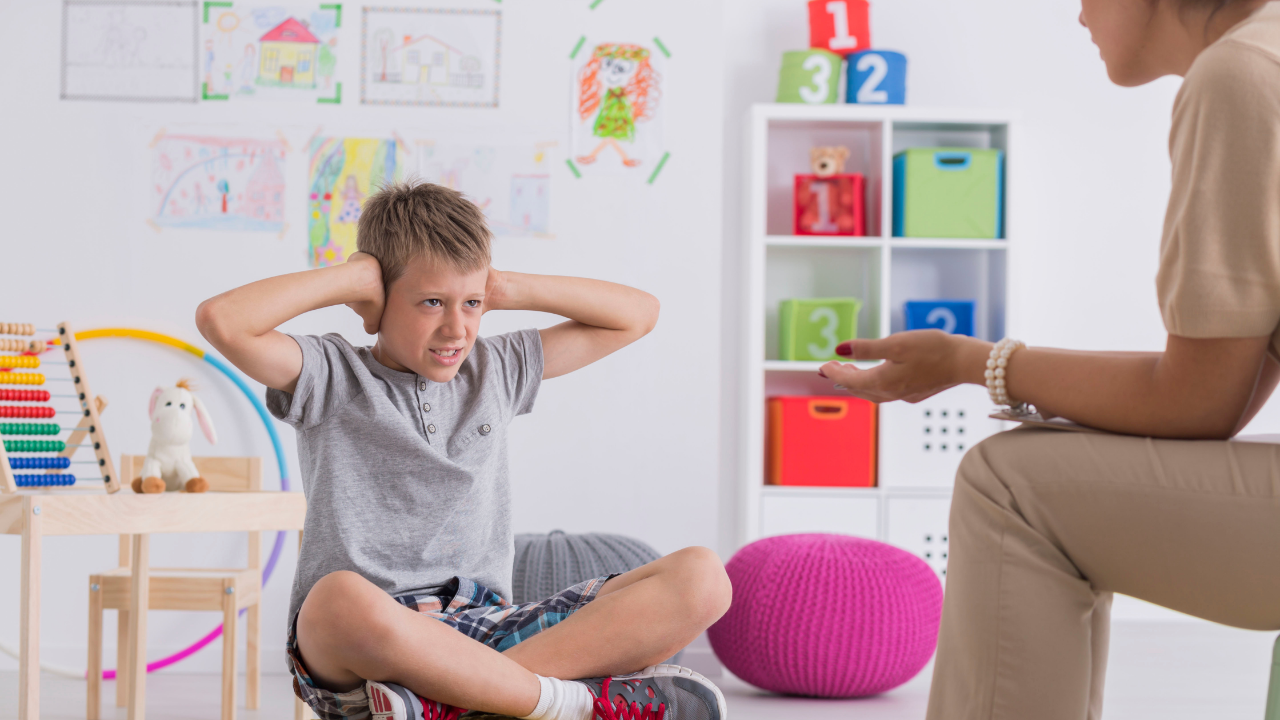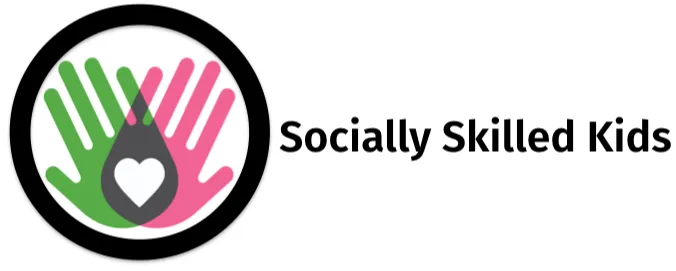The Best Ways to Decrease Challenging Behaviors in the Classroom
Jul 16, 2020
Challenging behaviors in the classroom are always a hot topic and could probably be discussed
All. Year. Long.
But when you think about it, we really do talk about challenging behavior in the classroom all year long, because we talk about social skills. And I believe, that most challenging student behavior and inappropriate behaviors are a direct result of a lack of social skills.

Of course, there are some mental health and emotional development disorders that can cause very significant child behavior challenges, for example, Oppositional Defiance Disorder {ODD} and Conduct Disorder {CD), but for the purposes of this discussion, we will be talking about challenging children’s behavior management issues that are most likely due to a lack of, or poorly developed, social skills.
This social skills deficit that is contribution to a child’s behavior may be due to factors such as; Autism, ADHD, Anxiety, Developmental Delay, Speech and Language Delay, Learning Disabilities or Environmental Factors.
With the support of the early childhood educators using best practices, we can have a positive impact on these individual students and child development, decreasing challenging behaviors in the classroom by teaching and replacing them with improved communication skills for better student behavior management throughout the school year since we know the root cause of it.

DECREASING CHALLENGING BEHAVIORS IN THE CLASSROOM
What Are Challenging Behaviors in the Classroom?
The definition of challenging behaviors may vary somewhat for each of us, but in this post, I will be referring to behavioral problems that upset, disrupt or distract others. I would also add that these behaviors are those that make it difficult to teach and learn for the entire class. Additionally, they are generally not just a one time thing, but are repetitive behavior problems for that particular student.
Why Do Kids Have Challenging Behaviors?
As mentioned at the beginning of this post, there can be many reasons for bad behavior. We will be addressing students who may have one or more of the disabilities listed above, but not those with significant mental health disabilities causing these behavioral issues. These kiddos require a more involved and carefully orchestrated plan of treatment, with the support of mental health professionals and support Team using specific strategies for student success.
Most kiddos in our care, who are engaging in challenging behaviors in the classroom, are doing so due to one or more of the following reasons:
- Lack of Social Skills
- Need For Control
- Low Self-Esteem
- Environmental Factors
And the reason(s) for each of these may include:
- Disabilities such as Autism, ADHD, Sensory Processing Disorder, Anxiety, Learning Disabilities
- Difficult Home Life
- Abuse or Neglect
- Personality Traits {wiring}
- Post Traumatic Stress Disorder {PTSD}
What is the best way for us to help?

The most important thing we can do to help is to figure out why the child is exhibiting the problem behavior(s). I can’t stress enough, just how important this first step is for seeing a good behavior change.
I think most people would agree to this however, many still don’t complete this first step before putting an intervention into place.
I think of it like this, it would be like putting a Band Aid on a child’s leg, because they said it hurt.
Would you do this without trying to find out why their leg hurt?
Maybe they have a cut. Sure.
But maybe they have a bruise, a sprain, a break or worse!
Conversely, if a child came to you and said his/her leg hurt, you would not rush them to the hospital to have a cast put on their leg!
I always tell my colleagues:
“Don’t put a Band Aid on a break and don’t put a cast on a scrape.”
Despite our best efforts, neither is going to help the child during this difficult time. You may feel like you are taking action. But the Band Aid will not be enough support to teach the child learn what he/she needs to learn to stop the behavior issues. And the cast will not only be unhelpful but may create over-dependence. What the child needs is positive behavior support.
Tips for Decreasing Challenging Behavior(s)

Understand It: As mentioned above, it is super important to understand the function of a child's behavior. Why is the child engaging in this behavior? What is the student getting or avoiding, by engaging in this behavior?
The answer is not always obvious, especially if you are close to the situation.
Completing an ABC data sheet every time the student engages in a pre-selected challenging behaviors in the classroom, is a great way to show you patterns that you did not see before. And this, can help you to determine the function of the behavior.
What Is An ABC Data Sheet?
It is a way of recording what is happening before and after a targeted behavior. That information is then used to try to figure out why those specific students are engaging in that behavior.
ABC:
Antecedent– what happened right before the challenging behavior
Behavior– the challenging behavior
Consequence– what happened as a result of the challenging behavior
Here is an example: Student X calls out loud and rude comments to the whole class.
Teacher passes out math tests to students. When student X gets his test, he looks at it and screams out “This is stupid and boring!” The teacher walks over to him and tells him to stop shouting. He continues to shout. The teacher sends him out of the room. Student X sits in the hall and pouts.
A = Gets/looks at math test
B = Shouts Out “This is stupid and boring!”
C = Sent out of room. {Big C} Takes test in hall. {Little c}
*Note: For C {consequence} be careful to write down what happened as a result of the behavior. What happened immediately following the behavior. Not, what consequence you gave the student later, i.e. called home, had to stay in from recess, etc. This can be important information too. For now, record what happened as a direct and immediate result of the behavior. This is usually what maintains the behavior next time.
**Sometimes I will record a “Big C” and a “Little c.” The Big C is for the immediate consequence and the Little c is for the later consequence that sometimes occurs.
Join us in The Teacher’s Lounge where we discuss this topic and So-Much-More in depth. Members get fabulous freebies like this one below.

It is a very simple version, appropriate for challenging or disruptive behavior such as; calling out, inappropriate talk, grabbing materials, tantruming, etc.
Keep it on your desk or somewhere where you have easy access and fill it in right away as the challenging behaviors in the classroom occur. Try to resist the temptation to wait until later to complete it. You may forget important information. Quickly jot down the ABC on the sheet.
Complete this chart for at least a week or at least 5-10 occurrences of the behavior. You may see a pattern, and be able to make more informed decisions and put more effective interventions in place as a result.
Once you have an idea about why the challenging behavior is occurring, you will know whether you need a Band Aid or a cast
In the scenario above, if you collected data for a week or so and saw that student X frequently shouted out when given work that was hard for him, you may determine that the function of this behavior was to get out of doing the work in front of his peers. He may be more comfortable doing this work alone, with the teacher, in a quiet space.
Therefore:
- You may decide to try giving him a separate space to do math work.
- You may decide to look more closely into his math ability.
- You may decide to talk to him about how he feels about math.
Also included in the freebie is a Positive Attributes Sheet. There is one for the teacher and one added benefit for the student.

Students' behavior that are challenging can get a lot of negative attention. Sometimes we start to see only the negative reactions and behaviors that the child exhibits without a direct correlation.
The Positive Attributes sheet is a way to keep the positive things about the child from getting overshadowed. Use this to remind yourself about the positive aspects of the child and to incorporate these things into your conversations and into your teaching methods, whenever possible for a more positive relationship.
The child’s version may be a good tool for the student, to help them see their positive attributes instead of focusing on the negative.
I hope this helps you figure out the root of your student’s challenging behaviors in the classroom so that you can begin to build the skills needed for them to succeed!
Thanks So Much and Happy Teaching!
Cindy ~Socially Skilled Kids
Would you like to receive specially designed, creative and interactive FREE teaching resources?
Join us in the Teacher’s Lounge!

